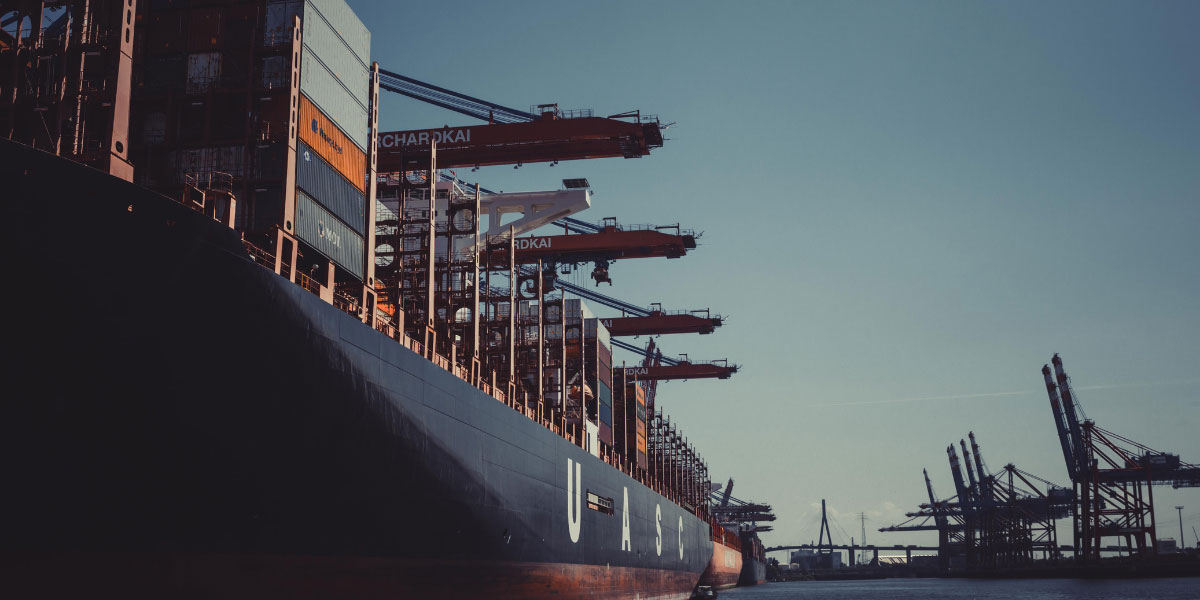
Subdued Demand
Expected Oversupply
Geopolitical conflicts
China-USA Trade War
The Global Shipping Industry en Route to 2024
The global shipping industry found itself at the epicenter of unprecedented challenges in 2023. It navigated through substantial economic hurdles, escalating inflation, significant shifts in consumer behavior, increased geopolitical uncertainties, and a pronounced move towards diversifying supply markets.
These factors marked a pivotal moment for the industry, with signs indicating that their influence is poised to persist throughout the unfolding of 2024.
Subdued Demand
As per Container xChange’s annual report on Trends and Impacts, the global shipping industry has been significantly affected by the relatively subdued expansion in container demand. This can be attributed to various adverse economic factors, such as rising inflation, increased interest rates, and subsequent changes in consumer spending habits.
The prudent consumer spending pattern observed in 2023 is expected to endure in 2024, as households continue to prioritize essential purchases over discretionary expenses. This directly affects the demand for imported manufactured goods.
As outlined in the report, 74% of consumers have curtailed their nonessential retail expenditures to navigate financial constraints more effectively. This has significantly impacted retailers’ demand for shipping containers.
This trend is anticipated to persist well into 2024 and potentially extend beyond, eliminating the likelihood of a demand rebound within the next 12-18 months.
Renowned for its cyclical nature, the container shipping industry witnessed an exceptional peak in 2021 and the initial half of 2022, characterized by record rates and robust profits for shipping companies.
However, consumer spending on high-value goods experienced a significant reduction in 2023, amidst global economic challenges and escalating inflationary pressures. Consequently, this resulted in a sharp decline in demand, causing spot rates on major trade routes to plummet, ultimately contracting the container trade in 2023.
The combination of streamlined consumption patterns and destocking practices further contributed to diminishing cargo volumes, setting the stage for an anticipated oversupply in the market.
Expected Oversupply
The capacity of newly constructed vessels scheduled for delivery by 2025 has increased to 2.95 million TEUs.
These vessels include “Megamaxes,” boasting a capacity of 23,000-24,000 TEUs, accounting for 23% of the total mainline new builds to be delivered; “Neopanamaxes,” with a capacity of 13,000-15,000 TEUs, making up approximately 60% of the overall fleet; and other mainline vessels, each with a capacity exceeding 7,000 TEUs, constituting the remaining 17%.
Given the existing market conditions, it appears that cargo carriers might have placed excessive orders for vessels, potentially leading to an oversupply in the global market. This surplus, coupled with reduced demand, could spark intense competition and price reductions, adversely impacting carriers’ long-term profitability.
Geopolitical conflicts
The geopolitical landscape of 2023 has left an enduring impact on the global shipping industry, and its effects are anticipated to persist into 2024.
As detailed in the report, the conflict in Ukraine, which resulted in the closure of Black Sea ports, causing congestion and delays in goods transportation, has had a particularly significant impact. Moreover, the notable decrease in Ukraine’s exports, especially in grains and food products, has contributed to global price hikes.
Recent conflicts in the Middle East have also exerted pressure on the shipping industry, prompting international companies to issue advisories and make adjustments to their operations. The challenges posed to key shipping routes, including the Suez Canal and the Strait of Hormuz, add further uncertainty to the industry in 2024.
Moreover, the expansion of BRICS, now including the UAE, Saudi Arabia, Iran, Ethiopia, Egypt, and Argentina, is expected to bring about major shifts in international trade routes, introduce new alternative payment systems, and support infrastructure development across the region. However, the outcome depends on how BRICS leverages its expanded influence in the evolving global landscape, presenting both opportunities and challenges for the shipping sector.
This collaboration, combined with other recent developments in the region, such as the inception of the India-Middle East-Europe Economic Corridor (IMEC), is poised to reshape the dynamics of global shipping.
China-USA Trade War
In response to the ongoing trade tensions between the US and China, escalating labor costs, and concerns about potential manufacturing disruptions akin to those witnessed during the COVID-19 pandemic, companies—especially in the technology sector—are increasingly exploring strategies to diversify their global supply chain operations away from China.
While completely severing ties with China poses challenges due to the robust electronic supply chains the country has established over the past three decades, companies are strategically relocating their final manufacturing and assembly processes outside of China while maintaining reliance on Chinese suppliers for essential raw materials.
Establishing a manufacturing presence in a new location is a gradual process, typically taking more than two years. According to the report, the anticipated growth in production in alternative regions is expected to gain momentum in 2024, with significant transitions occurring after 2025.
The Global Shipping Industry en Route to 2024
Looking ahead to 2024, the pivotal shipping trends mentioned above are poised to shape the global shipping landscape. Persistent consumer spending caution will influence container demand and availability, potentially leading to an increase in blank sailings in certain regions. Simultaneously, oversupply is expected to drive intense competition and reduced profitability, paving the way for more mergers and acquisitions in 2024.
Geopolitical uncertainties are anticipated to cast shadows on established trade routes, and the expanding influence of BRICS countries is set to introduce new market dynamics, further impacting the shipping landscape. Additionally, the gradual shift in supply chains away from China emerges as a key trend with significant implications for the market.
The future of the shipping industry is unpredictable, yet the interconnected economic trends and geopolitical events mentioned above are set to guide the course of the global shipping ecosystem in 2024 and beyond.



